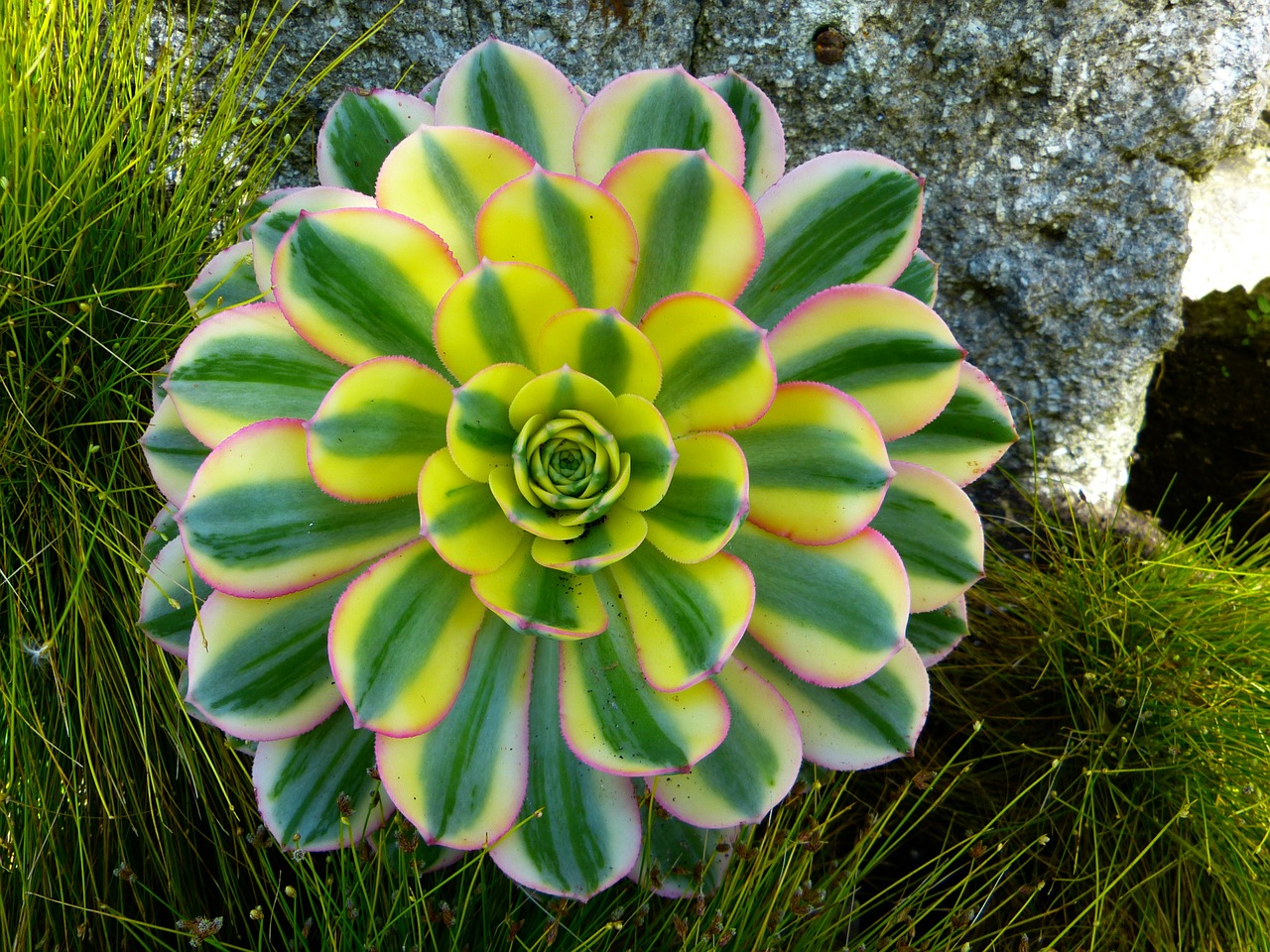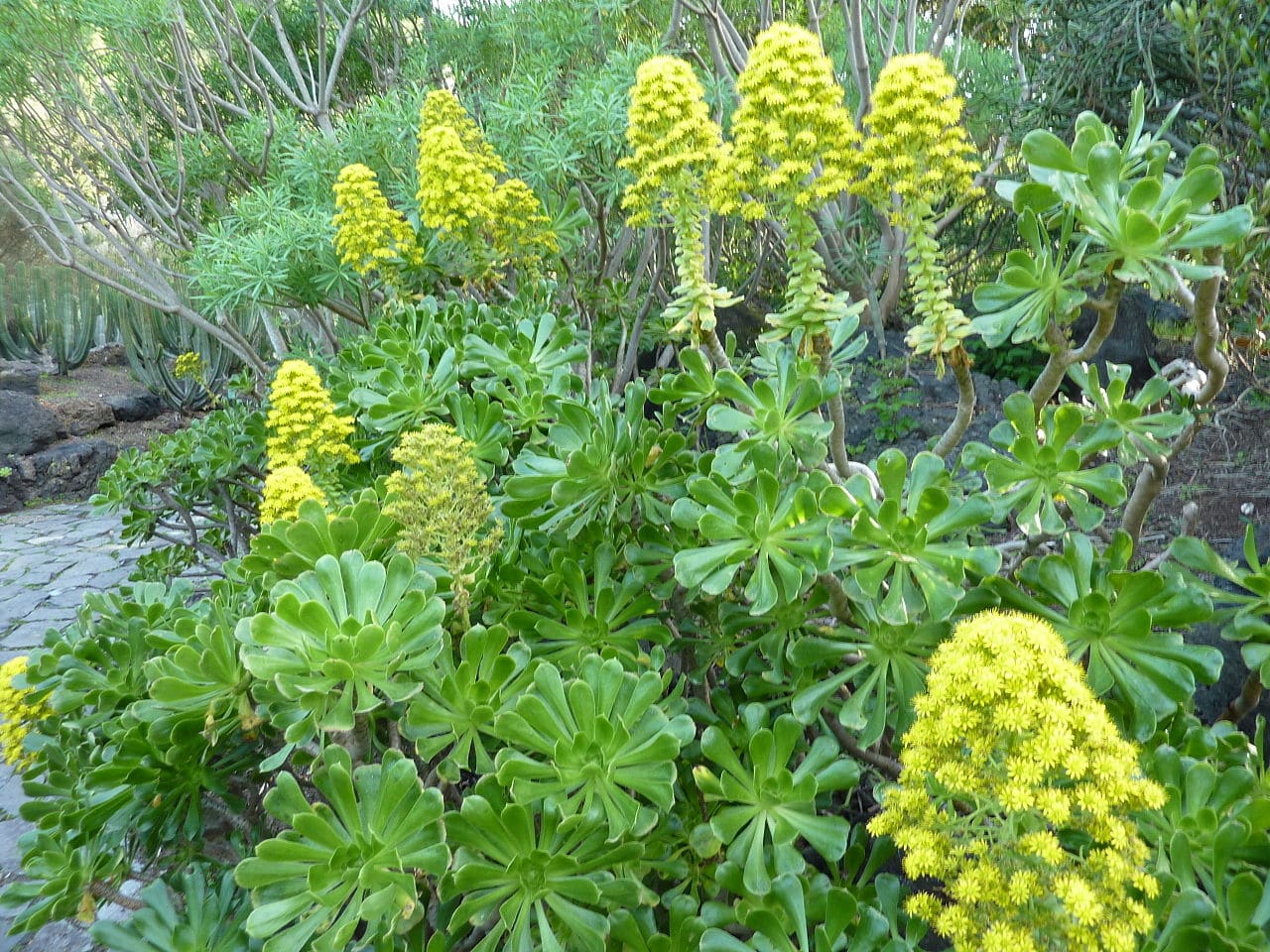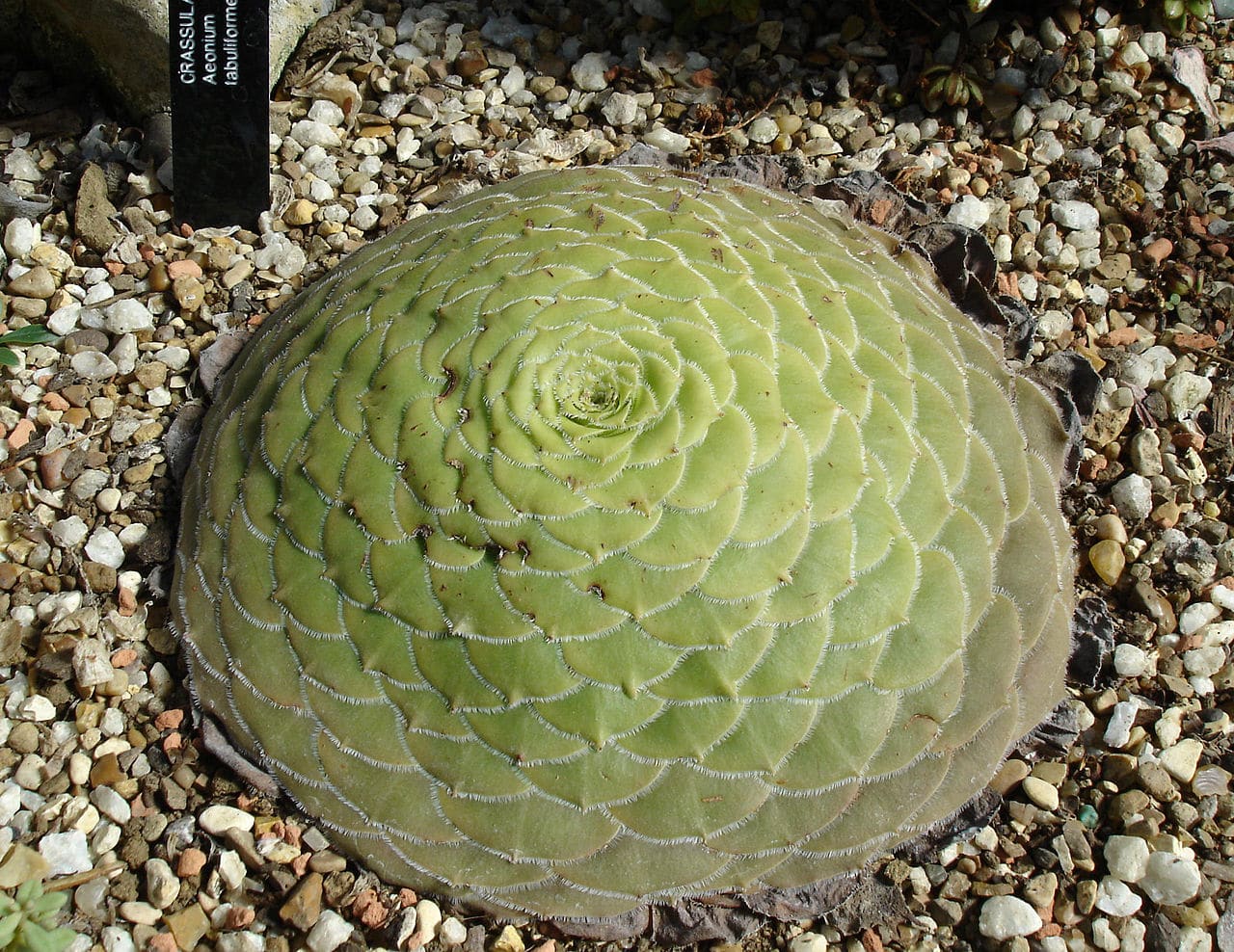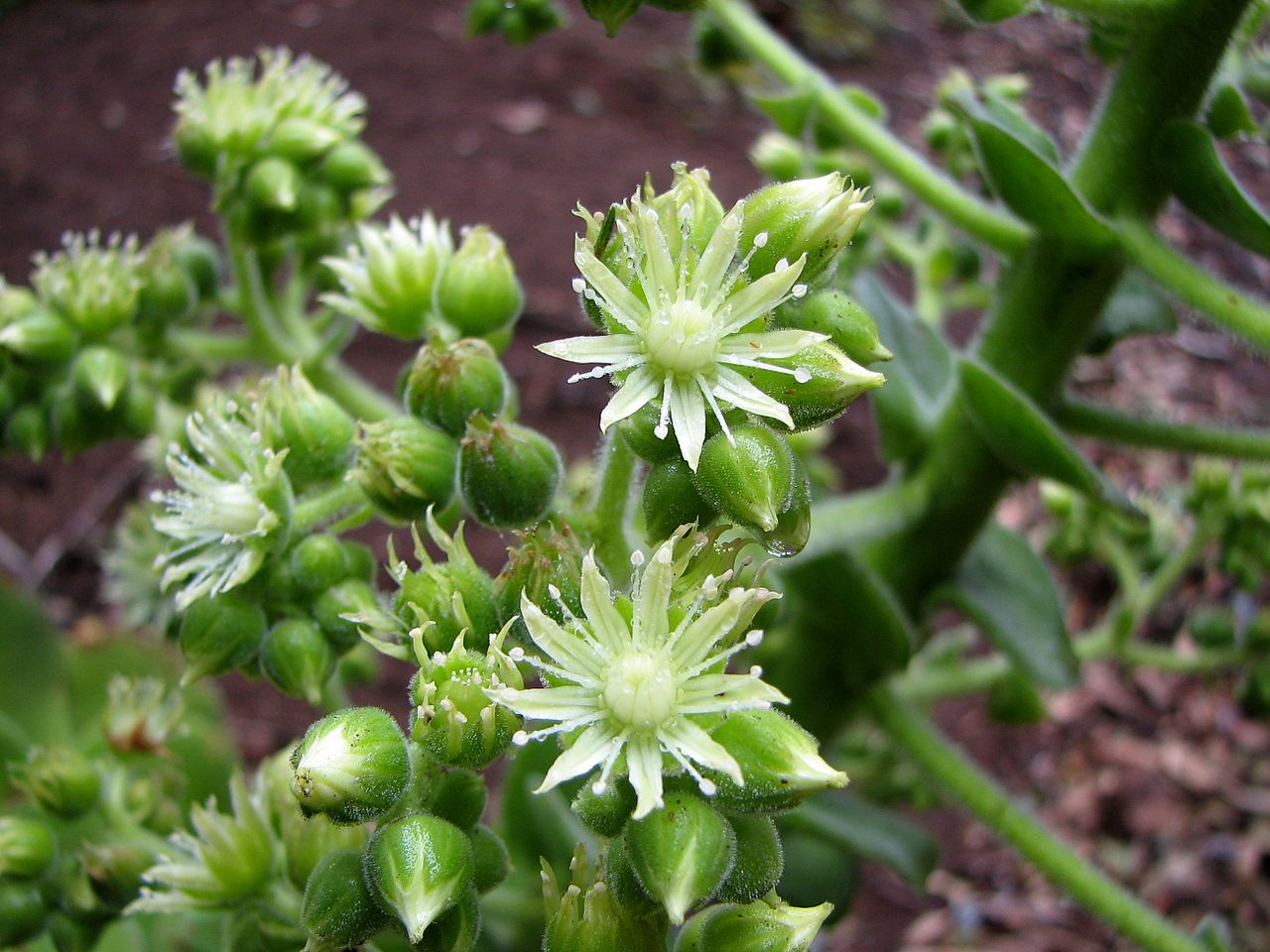
The Aeonium They are one of the most grateful succulent plants that we can have in a garden, balcony or terrace. As long as they are exposed to direct sun and receive water from time to time, they will grow to be a pleasure to see season after season.
They are so adaptable, that without a doubt we are talking about the best, or one of the best, beginner-friendly succulents and also for those who neither want nor / or can spend a lot of time on their crops.
Origin and characteristics of the Aeonium
It is a genus of succulent plants made up of about 75 species native to the Canary Islands especially, but also in Madeira, Morocco and East Africa. They belong to the Crassulaceae family, and They are characterized by developing a rosette of leaves on a stem that is usually straight or slightly sloping.
During winter they produce an inflorescence of white or yellowish florets which rarely bear fruit. On the contrary, if a branch breaks and falls to the ground, it will root without problems in a matter of a few days.
Main species
The new options are the following:
Aeonium arboreum

Image - Wikimedia / James Steakley
It is known as tree evergreen, immortelle, piñuela or garchosilla, and is a species native to Morocco. Reaches a maximum height of 90 centimeters, and develops stems from which sprout rosettes of green leaves of about 15-20cm in diameter. The flowers are grouped in inflorescences of about 15 centimeters and are yellow.
Resists up to -4ºC.
Aeonium arboreum 'Atropurpureum'

Image - Wikimedia / Agnieszka Kwiecie ?, Nova
It has the same characteristics as the previous one, but its leaves are brown, which is why it usually attracts a lot of attention.
canarian aeonium

Image - Wikimedia / Opuntia
Known as bejeque, is a species native to the Canary Islands, specifically La Gomera. It develops short, straight and thick stems, which rarely branch, and from which sprout rosettes of pubescent leaves with a diameter between 15 and 45 cm in diameter, Green color.
It resists frosts down to -2ºC.
Aeonium haworthii

Image - Wikimedia / PantaRhei
It is a native species of the Canary Islands, specifically Tenerife, which reaches an approximate height of about 40-50 centimeters. It develops a rosette of green leaves, with a diameter of 6 to 11cm in diameter. The flowers are small, whitish in color.
Resists up to -4ºC.
Aeonium lancerottense

Image - Wikimedia / Frank Vincentz
It is an endemic plant of the Canary Islands, which develops bushy or sub-shrubby habit with branching stems. The leaves are grouped in rosettes with a diameter greater than 5 centimeters, and of a green-glabrous color. The flowers are pink.
It resists frosts down to -2ºC.
Aeonium Tabulare

Image - Wikimedia / Bluemoose
Its original scientific name is Aeonium tabulaeforme, and is native to the Canary Islands, specifically Tenerife. It develops a flattened rosette of leaves, with a diameter between 15 and 30 centimeters, Green color. The flowers are grouped in pale yellow inflorescences.
It is not very resistant to cold, down to 0 degrees.
What are their cares?
If you want to have a copy, we recommend that you provide it with the following care:
Location
They are plants that They must be outside, in an area where the sun shines all day as long as they are used to it. If you buy one that they had indoors, you should get used to it little by little and gradually to be exposed to the rays of the star king, otherwise its leaves will burn.
Earth
- Flower pot: fill it with a universal culture substrate mixed with 30-40% perlite or similar (arlite, volcanic clay, quartz sand, etc.).
- Garden: not demanding, as long as it has good drainage.
Irrigation

Image - Wikimedia / Javier Sanchez Goalkeeper
Moderate to low. The soil or substrate must be allowed to dry completely before watering again, since Aeoniums are very sensitive to excess water. For this reason, it is also very important to bear in mind that, in case of growing it in a pot, you should not put a plate under it or inside a pot without holes.
Subscriber
Being plants that grow in spring and summer and that usually bloom in winter, the ideal is to pay them throughout the year (except in winter if the temperature drops below -4ºC) with a specific fertilizer for cacti and succulents, or by adding about two small tablespoons (of coffee) every 15 days of Blue nitrophoska.
Another alternative is to fertilize it with organic products, such as guano (use the liquid format if you have it in a pot) or the manure of herbivorous animals.
Thus, you will be able to have an Aeonium in good health, capable of fighting without problems the microorganisms that cause infections and the insects that can become pests.
Multiplication
As we said before, they rarely produce seeds in cultivation. If they do, they are sown in spring in seedbeds with holes in the base, filled with universal substrate. But If you want to have a new specimen quickly, we advise you to multiply it by stem cuttings.
These cuttings are obtained in spring or summer, and are planted in individual pots with quartz sand, pumice or similar, and placed in a bright outdoor area but protected from the sun. In about 15-20 days they will root.
Plagues and diseases
They are quite resistant, but can be affected by mealybugs and snails. As they are relatively small plants, you can remove them by hand, or if you prefer with a natural insecticide such as diatomaceous earth.
Planting or transplanting time
En spring, when the risk of frost has passed.
Rusticity
It depends on the species, but in general they resist weak frosts and of short duration of up to -4ºC.

What did you think of the Aeonium?